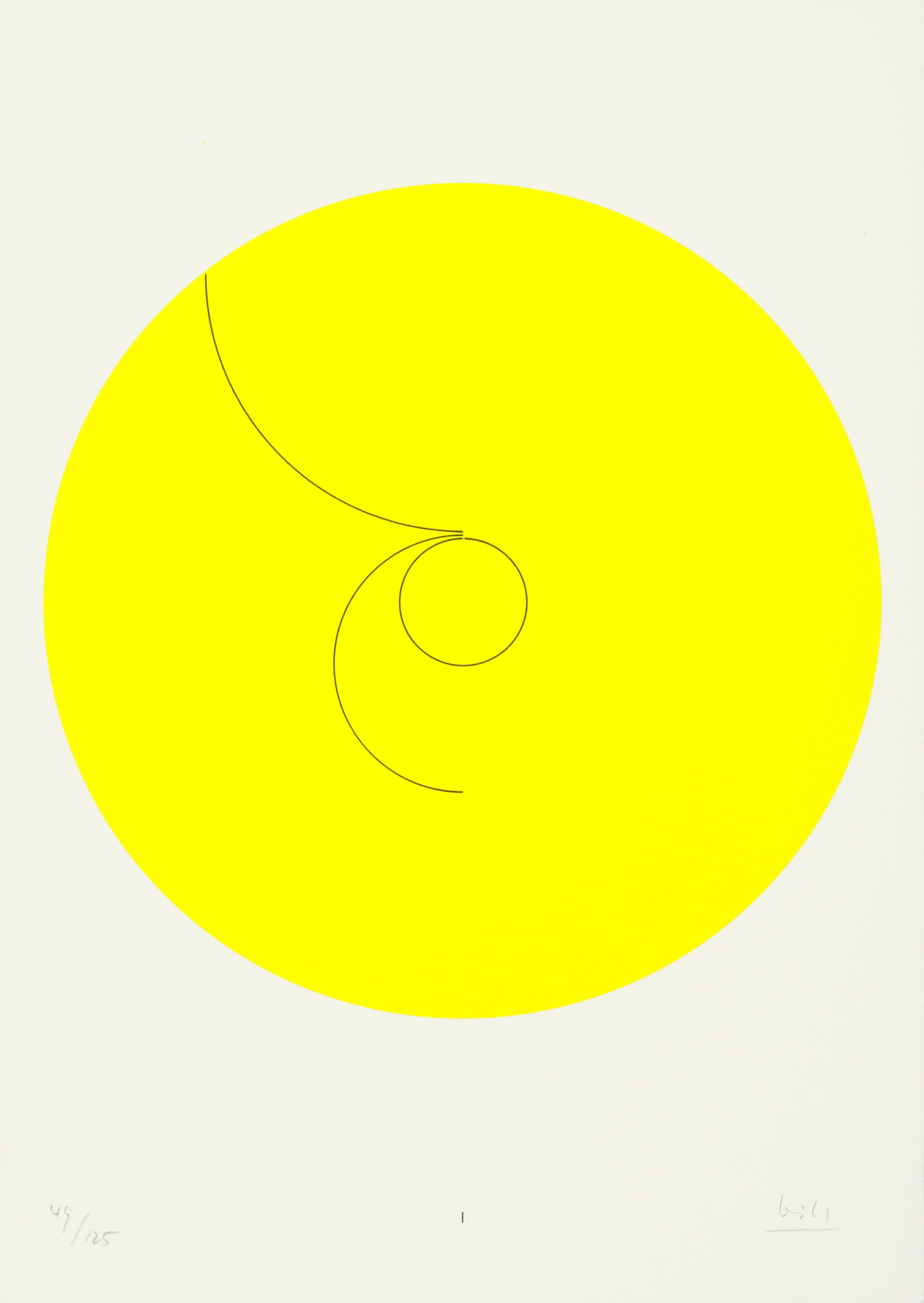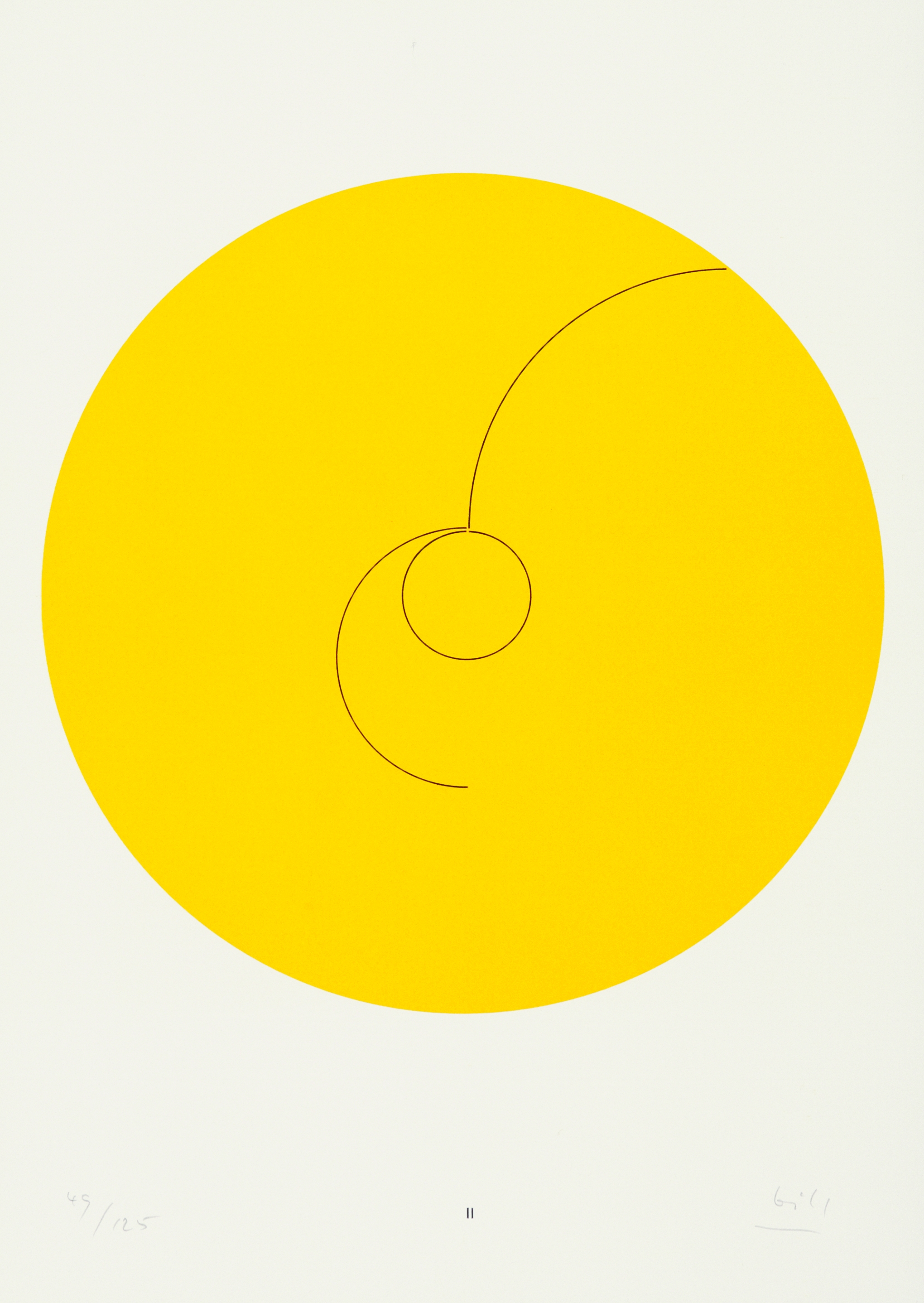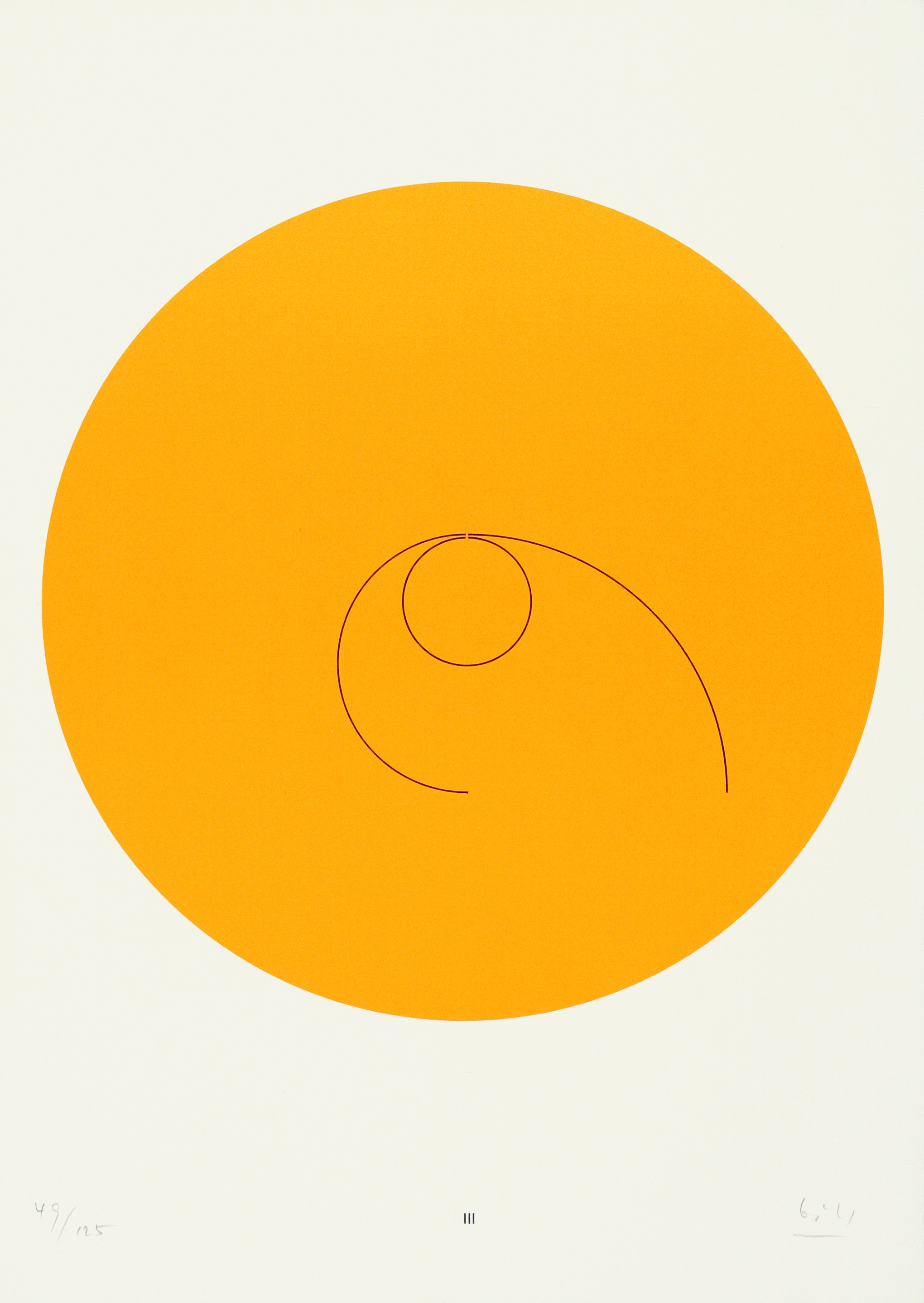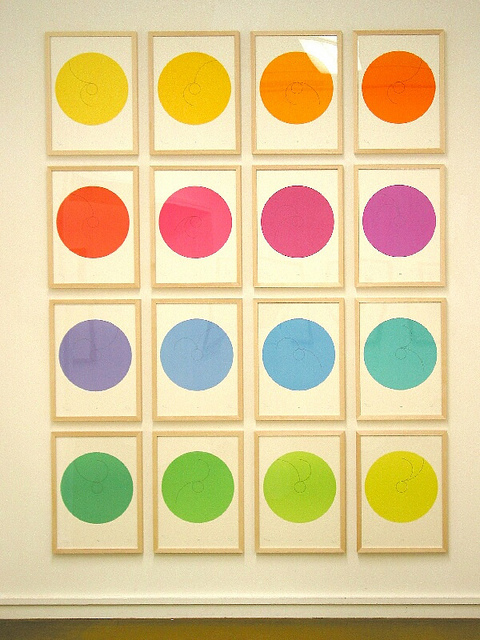Folder with 16 lithographs on handmade paper
Dimensions: 50.5 x 36 cm each
Signature, inscriptions, markings: signed at lower right, numbered at lower left
Copy Number: 49/125
Printer: Fernand Mourlot, Paris
Editor: Société internationale d’art XXème siècle, Paris
Text: Max Bill
Accession Number: 1000173.1–16
The term "constellation" describes the angular position of the sun to the moon or to other planets as seen from the earth. As special constellations the conjunction, the opposition, the quadrature, the trine and the sextile are distinguished. Max Bill takes them as the occasion for his own "constellations" of "three circular lines of equal length. these are: a circle, a semicircle, a quarter circle."1
The 16 lithographs vary the theme of the three circular lines of equal length in their arrangement and the colors of the background. The circle line forms the center in each case. The lines of the semicircles and quarter circles are meant to start from a point, but not to touch at their starting point, in order to make the group of lines clear. They are arranged in a rectangular system, and their positions change by 90° or a multiple thereof in each case. Overlaps are not allowed and repetitions of the same constellation as a mirror image are excluded. The line of the semicircle initially remains in its described position, the line of the quarter circle changes until all possible constellations have been performed. Then the line of the semicircle comes into a new position and that of the quarter circle turns again from the center. This is repeated a third time.2 The colors of the leaves correspond to the sequence of a 16-part color circle.
In the pictures, depending on the position of the picture elements and the color of the background, a different dynamic is created. A process is set in motion before the viewer's eyes, the cognition of which can succeed through precise observation and intellectual comprehension. According to the portfolio text, the system for the underlying theme goes back to a painting by the artist from 1944, when Bill used three colored circular arcs to investigate color vibrations at the edges of colored surfaces. In 1935-38 he had published his "fifteen variations on a theme" in Paris. According to Bill, it was possible to love the works without having understood them, but the full enjoyment came only when understanding their modalities.
Bill wanted to systematize and perfect the appearance of a work of art from its elements. In texts he strove for a theory of the "mathematical way of thinking in art". But what is the artistic sense and use of applied mathematical operations? The contradiction between theoretical approach and artistic expression resolves itself with the core theorem of the mathematical way of thinking. In it, geometry is not understood as a constraint that demands submission from the artist; rather, it provides him with the material in which to realize his intentions. A thought is thus put into a form and becomes directly perceptible information.
The art form, in which the pictorial elements are meant neither as an image of nature nor symbolically, but in an interplay of forms only themselves signify, goes back to a designation of the Dutch De Stijl representative Theo van Doesburg.
As early as the 1920s, van Doesburg stated: "Nothing is more concrete than a line, a color, a surface. Bill developed this approach further and formulated it programmatically in 1936: "concrete art is independent in its own way. it is the expression of the human spirit, intended for the human spirit, and it is of that sharpness, unambiguity, and perfection that must be expected of works of the human spirit."
Thus, the 16 constellations of closed and open circles can also be interpreted metaphorically as a symbol of man between identity and transformation, unity and multiplicity, or contemplation and action.
Sven Künzel
1 Max Bill, 16 constellations. Portfolio text, Paris 1974.
2 Ibid.



